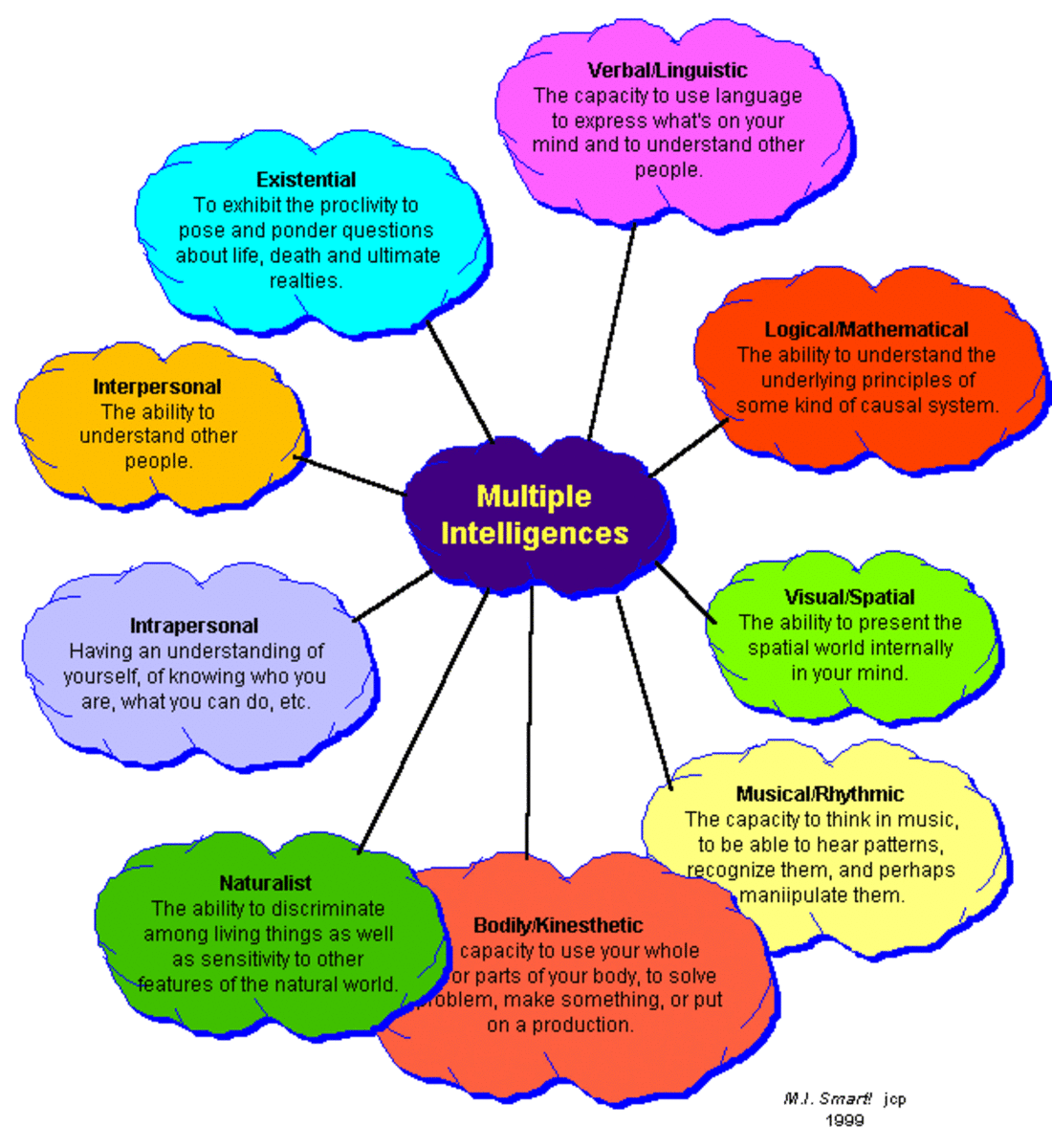How To Handle Different Learning Styles When Teaching English As A Foreign Language
Get to Know Your Student's Learning Styles
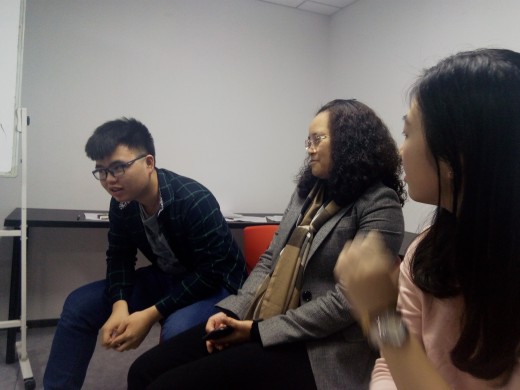
Introduction
Scientists and various types of '-ologists' from one school of thought or another are fond of categorising students of all ages as belonging to a particular set-group of learners.
Now, not having a PhD myself, I'm in no position to dispute whether they're right or wrong and if it helps me to do a better job then I'm happy to slot myself and my own students into any of the three main camps commonly known as Visual, Audio and Kinesthetic Learning Styles.
Another good thing about not having a PhD is that I can discuss their relevance using down to earth language, you know, just like a normal person.

Why Is This Important?
As teachers our aim is to encourage, inspire and inform. If your students leave your class with less than 50% knowledge of what you've tried to teach, can you still count this as a job well done?
In China, many ESL teachers (English as a Second Language) are on probation during their first three months, sometimes during the whole of their first year. However if learners show no noticeable improvement, it's quite possible that they may be heading for home earlier than planned.
1. Visual Learners


Visual learners, unsurprisingly process new information through seeing.
They're the kind of people who, when you talk or explain something to them, are most like to respond along the lines of 'yep, I see what you are saying,' as this is their unconscious way of assuring you that they visually understand and are up to speed.
Within their own planning and execution of every day tasks including study, they're more likely to use visual prompts, stimuli and reminders such as brightly coloured sticky notes.
2. Audio Learners
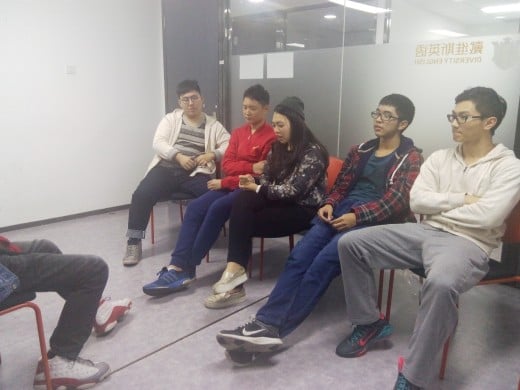

Do you see any students in your room who have slightly larger than normal ears?
Okay, so I'm just kidding. But this one needs no deep explanation, it simply does what it says on the tin. These kinds of people learn best when their hearing senses are on full alert.
Discussion, debates, lots of opportunities for exchange are preferred. When responding to you they may well use sentences such as; 'I hear you' and 'that's crystal clear.'
3. Kinesthetic Learners


Kinesthetic? Come Again?
Ah, the science of Kinesthesia. Something about touching, erm, something else right?
Kind of, but not really. You won't necessarily be asking your learners to reach out and grab something or someone, but you may notice them perking up when you introduce any type of physical activity into the session.
Once you've managed to get them to keep still so you can assess their progress, they'll probably use phrases like 'I can handle it' or 'got it!' in response to your questions.
These are definitively active words which match their energy and enthusiasm for physical movement.
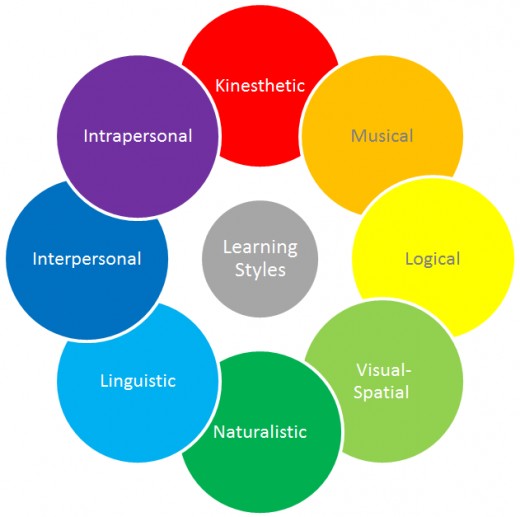
Combining Learning Styles

Talking And Listening
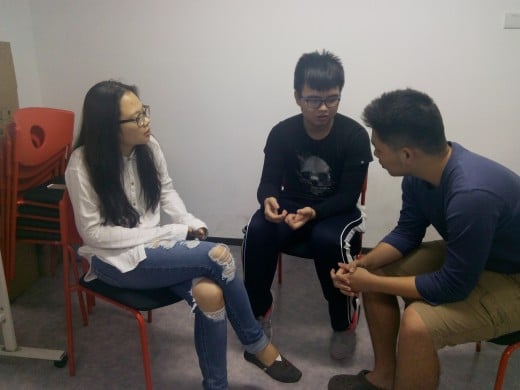
Be Flexible
It's always helpful to have an idea of these learning styles, Visual, Auditory and Kinesthetic,but it's just as important to remember that they're not set in stone.
People's attention can vary between them depending on the subject being taught and their level of interest in it.
Other factors like age of students and the reason for learning come into play too. Even during the course of a series of lessons or workshops you may notice your learners switching between learning styles.
Each lesson that you craft should ideally be delivered in ways which meet and satisfy all three of these learning styles ensuring no learner gets left out.
Specific Examples
You could begin with an activity which requires students to listen as you explain and instruct.
Reinforce this auditory experience with visual aids such as a Power Point presentation or other IT source or even simple flashcards. Utilise anything which gives the brain a break from words and switches over to pictures.
For the final part of the lesson, incorporate an activity which requires people to move, even if it's just moving seats every twenty minutes in order to change groups or talk to a new partner.

Howard Gardner's Theory
Howard follows Glasser, our previous boff, adding that people, not just learners, all people use their intelligence in different ways according to different situations.
Recognising this could give you a real advantage in designing your lessons and workshops.
William Glasser's Theory
Adult theorist, William Glasser, was very much a proponent for incorporating all of the learning styles in one lesson as he believed that students come to learn aimed with a variety of tools for doing so.
He stated that from a lesson based on reading alone, only 10% of information would be retained and from a lesson focussed mostly on listening, the figure's not much higher, resting at about 20% of information remembered.
But when a conscious effort is made to engage learners through a variety of styles the information retention rate is significantly improved. In fact it actually shoots up to 70% if you involve discussion and, goes even higher to 80% if you add experiential learning.
Basically over the course of the learning period whether it be days, weeks or months, aim for multiple types of activity which cater to multiple senses.
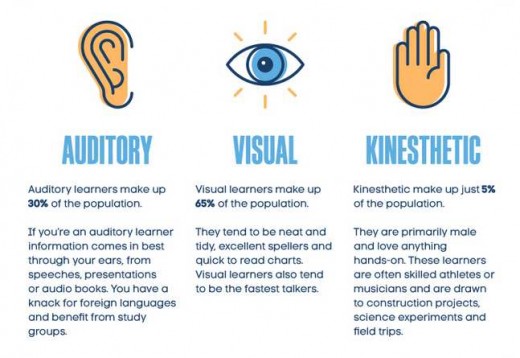

More on Howard Gardner's Theory of Multiple Intelligences
Gardner is obviously a details kind of guy because he broke down his premise into these sub-categories, Stay with me, I did promise to use down to earth language.
1) Visual/spatial Learner. Again pretty straightforward. Referring to people who are aware of the space they're in and their connection to it. Photographers, artists, sculpturers for example. Creatively visual people who might pick up on the details of their environment that others miss or aren't interested in.
2) Bodily-kinesthetic People. Remember, kinesthesia is about movement, so we're talking athletes or sportsmen and women, people who are body conscious and like to keep fit and active. Sitting still for too long is hard for anyone, but for bodily-kinesthetic folks it can start to feel like torture. You'll be able to tell by those students by their restless movements and facial expressions. Surprise them with an unexpected activity which requires them to move about.
3) Musical People. They may be consciously or unconsciously aware of sound, rhythm and tone whether music is being played or not. They can probably pick them up in your speaking voice. Naturally we're talking about singers, musicians, song-writers and also those who just love or work with music such as sound engineers. They'll be intrigued if you incorporate some form of music into your class.
4) Linguistic People. Good oral or written presentation through language, words, synonyms, homonyms, antonyms, poetry, prose is the most meaningful to them. Pictures don't mean much as they would rather write than draw, and rather read than look at their information. Graphs, charts and possibly maps can be a turn-off.
5) Logical mathematical people, scientists. Some think they're polar opposites to the linguistics. They thrive in order; numbers, sequences, one thing after another in logical sense. They like to solve problems and figure out puzzles,
6) Interpersonal people. Personally I think this encompasses almost everybody, but there are still some who stand out because they're curious about their fellow classmates, they like to see the growth and development of others and they may be anxious about ensuring that no-one is left out. These are people with a natural affinity towards helping their fellow man or woman
7) Finally, Gardner gives us Intrapersonal. So how's that different from Interpersonal, I hear you ask. That's a good question. Intrapersonal people are often misunderstood because they have a high level of self-awareness which can be viewed as stand-offishness when it's really not. They simply know who they are and how they fit into the space around them with groups of people they may or may not know. They're happy to get to know people gradually and won't rush to ingratiate themselves into the group. They have a level of self-confidence that others could find intimidating until they get to know them better.
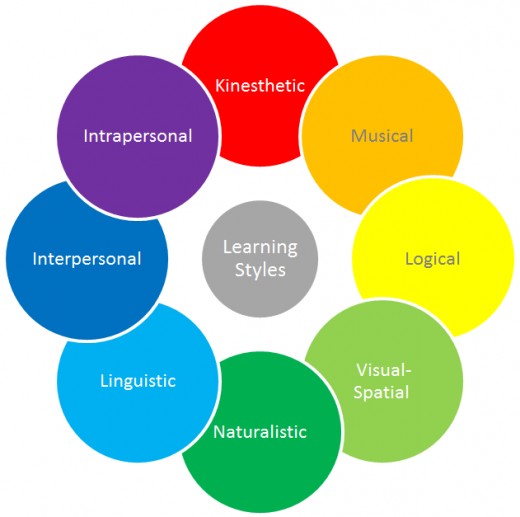
Take The Quiz To Find Your Learning Style
Birmingham Grid for Learning - Multiple Intelligences (Secondary)
http://www.bgfl.org/bgfl/custo...
Final Thoughts
You don't need to know these learning styles in depth to be a good teacher.
You certainly don't need to study William Glasser or Howard Gardner's theories. They're just mentioned here FYI.
As you spend time with your students you'll quickly be able to figure what they like as a group and the ways in which they prefer to learn as individuals, always bearing in mind that people's learning styles change depending on what they're learning.
Your role then, is to provide activities which meet those needs and which have them looking forward to the next class.
For more information about the variety of teaching jobs in China please check out
http://hubpages.com/education/6-Ways-to-be-a-Fun-and-Effective-ESL-Teacher
And if you'd like to be an expat but aren't too keen on teaching then check out ideas for other jobs you can do in China..
http://hubpages.com/travel/You-Know-Youre-Ready-to-Become-an-Expat-in-China-When



